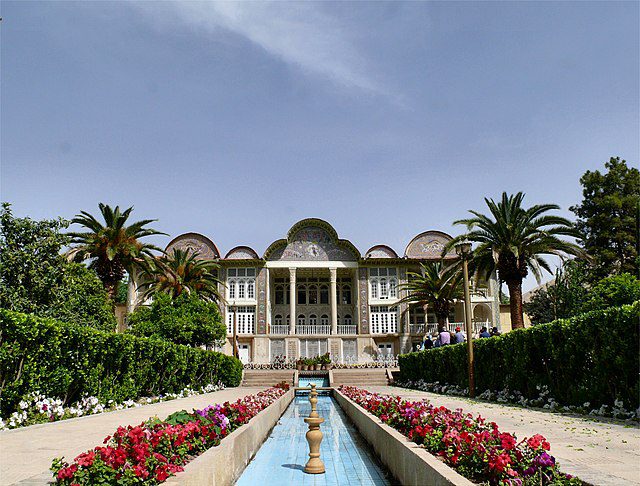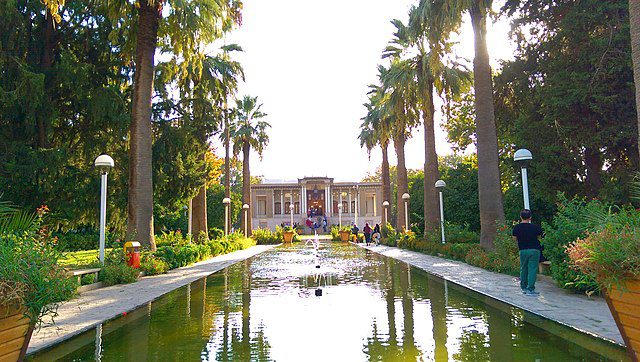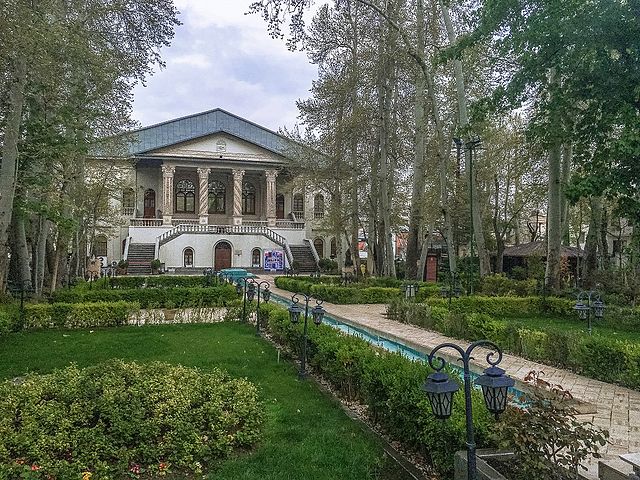Table of Contents
The Persian garden is a special type of architecture and structure of a garden and palace that Iranians invented and designed. This type of garden with a beautiful and eye-catching design is a symbol of the architectural, historical, and cultural richness of Iran. You will find life in these gardens, plants, flowers, running water, etc. These elements are part of the beauty of this type of garden, which with its masterful and regular design has created a lasting collection throughout history.
This architecture and structure are also inscribed on the UNESCO World Heritage List. These Iranian gardens are a piece of heaven on earth. Walking along the flowing waters, seeing beautiful fountains, caressing the living nature, soaring trees, and the view of the buildings or palaces built in the garden, will make you feel good.
Persian Garden: Iranian Chahar Bagh
Persian Gardens, significant markers of Iranian heritage, showcase the essence of Iranian beliefs and ideas. For years, experts from Iran and around the globe have puzzled over their designs, with the “Chahar Bagh” layout being a key focus. This layout, with its geometric precision, mirrors the ancient Islamic-Iranian worldview described in old texts.
Think of these gardens as living history books. Their designs aren’t just pretty arrangements of plants; they reflect deep thoughts and beliefs. Among these designs, the “Chahar Bagh” pattern is like a secret code. It tells the tale of how Iranians see the world—where spirituality, nature, and human life blend seamlessly. These gardens are more than just green spaces; they are spiritual retreats, where every leaf and flower holds ancient wisdom, sharing stories of a time when people understood the deep bond between nature and the human spirit.
Registration of Persian Gardens in UNESCO
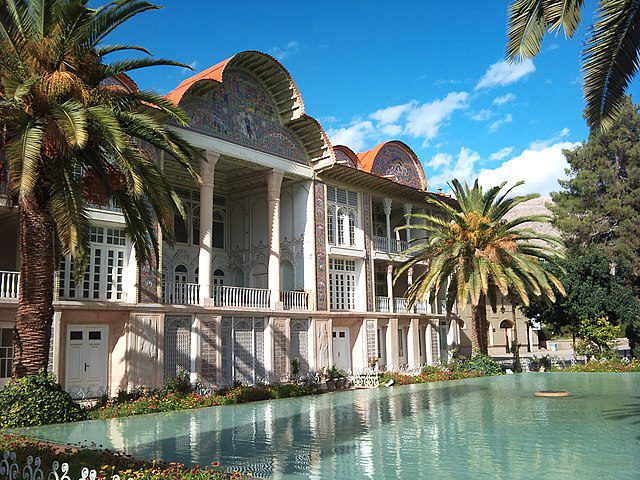
The Persian Garden was registered as the thirteenth Iranian work in the list of UNESCO World Heritage sites of Iran in 2011. The Persian Gardens of Pasargad, Chehelston, Eram, Fin, Abbas Abad, Dowlat Abad, Pahlavanpour, Akbariyeh, and Shazdeh are the gardens that are registered in the complete collection called the Persian Garden.
The Etymology of the Persian Garden
In ancient Persian, the word “paradise” means “fence”, which was used to name a unique kind of garden that is enclosed. The same word is rooted in many languages, for example, words such as Pardis (Persian), Paradeisos (Greek), Pardes (Hebrew), Perdose (Arabic), and Paradise (English) are derived from the word “paradise”.
So this is the story behind Persian paradise gardens. It is really interesting, isn’t it? Unfortunately, some scholars, without examining the ancient origin of the word garden, have considered the origin of this word from Arabic and believe that it has entered the Persian language since the Seljuk period.
Structure and Architecture of the Persian Garden
The types of these gardens are based on their plan. Architects have built three types of gardens in Iran based on the slope of the land:
1. Flat and low slope gardens such as Chehelsotoun Garden in Qazvin.
2. Sloping gardens whose beauty is the flow of water from the upper parts of the garden to the bottom. Such as Prince Mahan Persian Garden in Kerman.
3. Gardens that were built using natural features such as ponds and forests. Such as Abbas Abad Garden in Behshahr.
Iranian gardens are divided into 2 general categories based on their type of design and plan:
First, the Gardens have two Parallel axes, and streets and alleys of side gardens intersect these two axes at a 90-degree angle. Such as Dowlat Abad Garden in Yazd.
Second, Gardens that have two, three, or four parallel axes that intersect in the center of the garden. Such as Nazar Garden in Shiraz.
One of the most important pillars of this type of garden is its center. The center of the gardens can be a palace, a beautiful building, a lake, or a combination of these.
Usually, four streams are connected to the center of the garden, which is the heart, and divide the garden into four parts, thus forming the pattern of four gardens. The pattern and image of the four gardens (Chaharbagh) and their heavenly beauty are reflected even in Iranian carpets.
The Role of Water in the Architecture of the Persian Garden
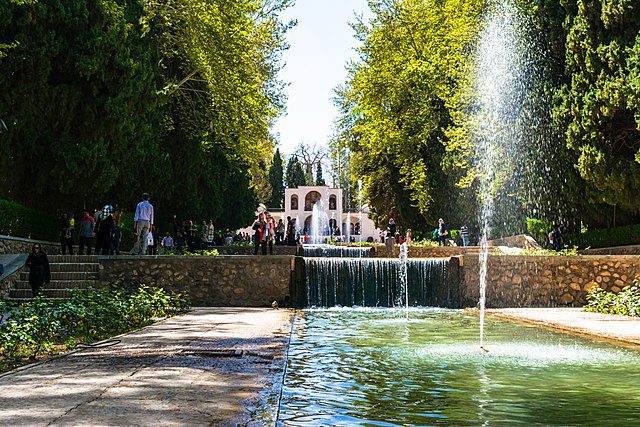
Before examining the importance of water in the architecture of these gardens, its vital role in life should be mentioned. Iran has long been a dry and water-scarce country, but with the creation of historical technologies for the use of groundwater, water has gone beyond its vital role and found itself in the position of art and architecture!
Before examining the importance of water in the architecture of the Persian gardens, its vital role in life should be mentioned. Iran has long been a dry and water-scarce country, but with the creation of historical technologies for the use of groundwater, water has gone beyond its vital role and found itself in the position of art and architecture!
The different forms of usage of water in the garden such as streams, ponds, pools, and fountains are each a sign of human domination on a part of nature.
The reflection of light in the water acts as a mirror, and the beauty of the garden and the vegetation can be seen once again in the waters of the ponds and pools. The role of water in summer is also very significant. Garden fountains on hot and dry summer days, increase humidity and create a refreshing atmosphere.
Usually, around the path, pairs of trees such as pine and purple, pine and sycamore, pine and cypress, elm, and cypress were used. At the bottom of all these trees, beautiful and fragrant flowers were planted to add to the beauty of the garden. Also, the inhabitants of the garden used the petals of flowers in the preparation of jam, halva, etc.
Famous Iranian Gardens
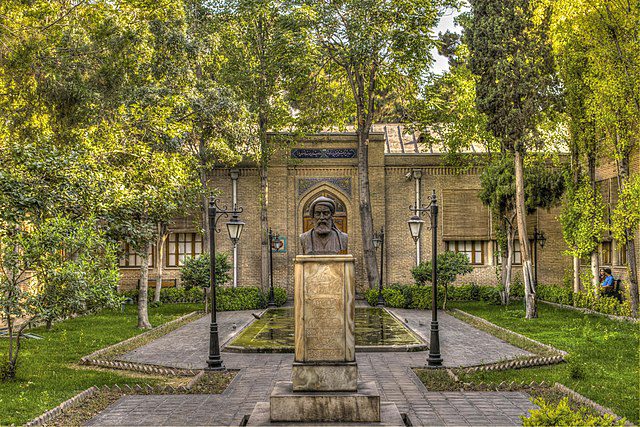
Wherever Iranians had access to Persian qanats and water, they established Iranian gardens.
Tehran Province: Niavaran Garden, Saadabad Garden, Farmaniyeh Garden, Ferdows Garden, Negarestan Garden
Isfahan Province: Fin Garden, Chehelston Garden, Hasht Behesht Garden
Fars Province: Pasargad Garden, Eram Garden, Afif Abad Garden, Narenjestan Garden, Jahan Nama Garden, Delgosha Garden
Kerman Province: Fatehabad Garden, Prince Mahan Garden
Yazd Province: Dowlatabad Garden, Pahlavanpour Garden, Golshan Tabas Garden
World-famous Gardens with Iranian Architecture
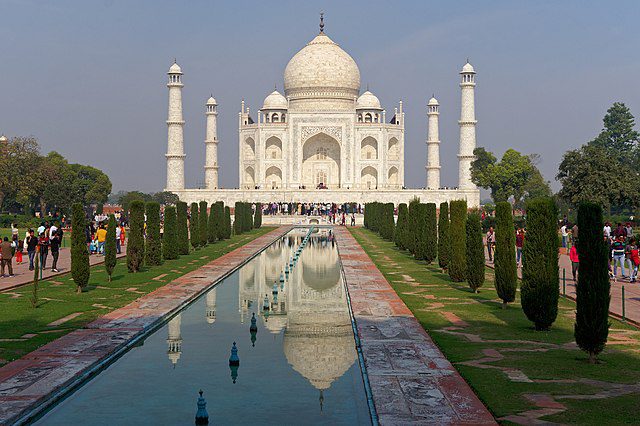
The structure of this type of garden is not limited to Iran, and in other countries, magnificent buildings with beautiful and eye-catching grounds have a special architecture of the Iranian garden.
The four famous gardens that are now outside the borders of Iran are:
Taj Mahal: This garden is located in Agra, India.
Homayun Tomb: This tomb is located in New Delhi, India.
Shalimar Garden: This garden is located in Lahore, India.
Babar Garden: This garden is located in Kabul, Afghanistan.
At last, when you travel to Iran, remember to visit these beautiful Iranian gardens and enjoy their beauty. In our Iran classic tours, there are collections of these famous Persian gardens that are on the itineraries and you will experience their fresh atmosphere.
FAQs about Persian Garden
Q1: What is the concept of a Persian garden?
A1: The Persian garden, split into four parts, used water for farming and decoration. It represented Eden and the Zoroastrian elements: sky, earth, water, and plants.
Q2: Where is the Persian garden located?
A2: The Persian Garden includes nine gardens from different parts of Iran. It represents the idea of Eden or Earthly Paradise. These gardens are located in Fars, Yadz, Isfahan, Khorasan, Mazandaran, and Kerman Provinces.
Q3: What is the history of Persian gardens?
A3: The first Persian gardens were documented around 600 B.C. in the Palace area of Pasargadae. These gardens date back to the end of Cyrus the Great’s rule (559-530 B.C.).
Q4: What are the elements of the Persian landscape?
A4: In such a garden, sunlight, shade, water, and buildings are crucial elements. They offer relaxation in various ways, like spiritually and for leisure (such as spending time with friends). This relaxation is the main purpose of the Persian garden, which is seen as a paradise on earth.
Q5: What is a walled garden in Persian?
A5: The Persians referred to these enclosed gardens as “paradaida.” The Greeks adopted this term and used it in their language as “paradisos.”
Q6: What plants are used in Persian gardens?
A6: In these gardens, evergreen trees like Iranian cedar (Cupressus sempervirens) and Turkish pine (Pinus brutia), as well as deciduous trees like ornamental plane tree (Platanus orientalis), are commonly planted. These gardens also prominently feature fruit-bearing trees and trees that provide shade.
Q7: Who built the Persian garden?
A7: Starting from the Achaemenid Empire, the concept of a paradise on Earth spread through Persian literature. Cyrus the Great was the first Iranian to create a series of Persian gardens at Pasargadae.
Experience the Secrets of Persian Gardens with Customized Tours
Iran, often hailed as the epitome of ancient grandeur, boasts one of the world’s most enchanting treasures: Persian Gardens. If you’re a traveler with an eye for exquisite landscapes and a penchant for personalized experiences, embarking on a journey to explore these gardens in Iran is the adventure of a lifetime.
At To Iran Tour, we specialize in crafting Iran tours and travel packages that go beyond the ordinary. Our approach revolves around the art of customization, where every aspect of your trip is meticulously curated to cater to your desires. By choosing our Iran Tours, you’re not just embarking on a sightseeing expedition; you’re immersing yourself in an adventure designed exclusively for you.
Choose To Iran Tour, and let’s craft your personalized odyssey through the enchanting world of Persian Gardens. Your unforgettable Iranian adventure awaits.

